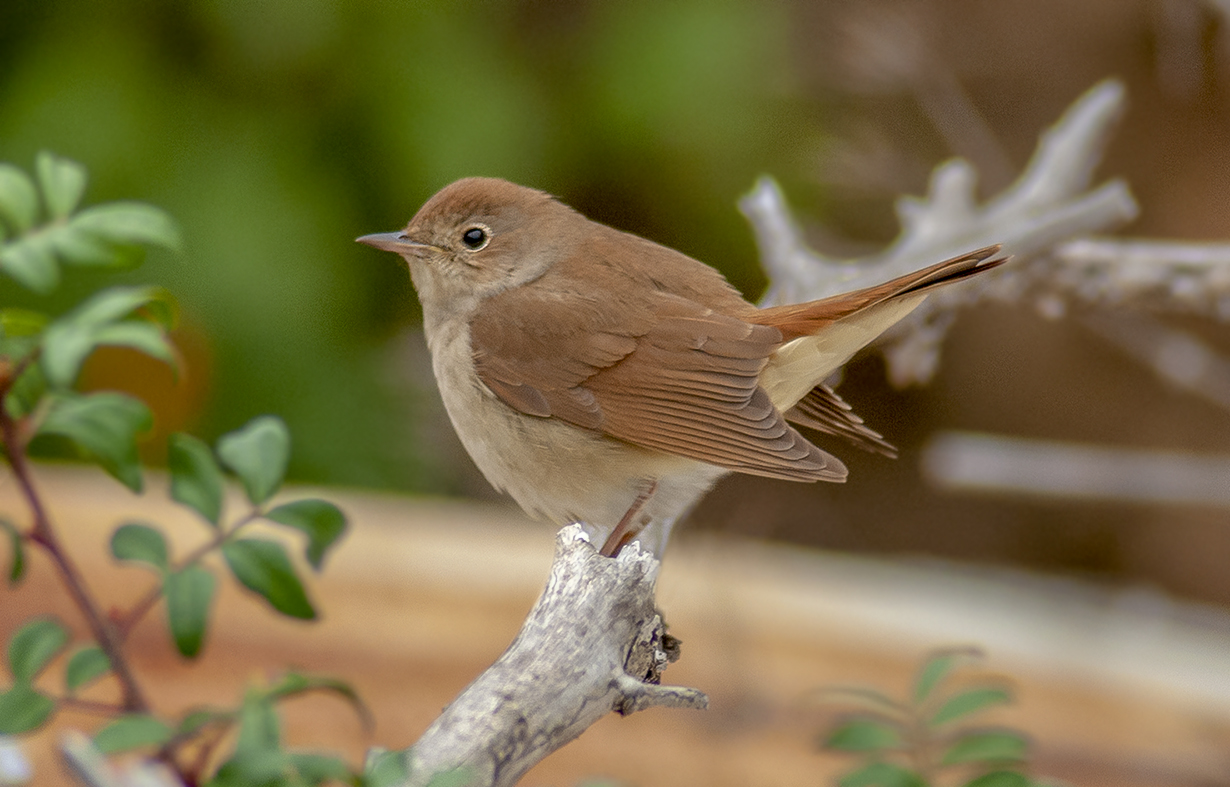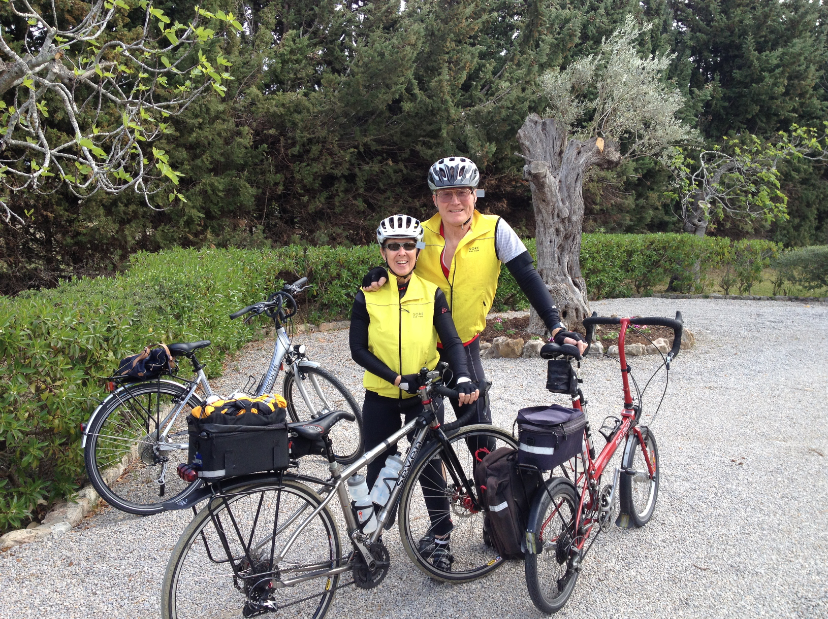3 – Reason and passion
one heroes of bird sound

Common Nightingale Luscinia megarhynchos Marettimo, Sicily, Italy, 19 April 2007 (René Pop).
This Easter 2020 will be the first one in decades that Mo and I haven’t spent in Mallorca. When I wrote the conclusion to The Sound Approach to birding in Mallorca it was Easter 2006. When I started thinking about this article I was back in Pollença, at Easter 2018. Yet, for me the whole history of the Sound Approach had started a couple of weeks after Easter 1983.
Cycling the back roads along a river with a friend, listening to singing Common Nightingales Luscinia megarhynchos my wife got a puncture. I had our two-year-old son Simon on the back of my bike, so she and a friend pushed her bike the seven miles back to the shop.
Common Nightingale Luscinia megarhynchos Monfraguë, Extremadura, Spain, 15 May 2004 (Mark Constantine). Songs of more than one male. Background: Common House Martin Delichon urbicum and Red-rumped Swallow Cecropis daurica. 04.015.MC.01520.11
Then I met Peter Grant. He was standing with a group looking through a telescope as I cycled past. I stopped to tell him about a Golden Oriole Oriolus oriolus seen that morning. He offered a look through the scope. Holding bike and boy upright I peeped at a kestrel. Nice, the instantly recognisable ace birder, editor of British Birds and author of so many ID papers is interested in a bird as unexceptional as a Common Kestrel Falco tinnunculus.
“Ah, you’ve seen Lesser Kestrel before?” No, I hadn’t, so I quickly put my eye back to the scope.
Search for Peter and you find him as author of the ground-breaking Gulls: a guide to identification. He died young, in his forties, at Easter 1990 before the internet went mainstream. He, the ultimate citizen scientist, taught birders about scientific topographical charts, explained how a bird’s moult and its sex made a difference to its appearance, and illustrated the whole thing in his Gulls. He co-founded the still popular holiday bird tour company Sunbird and took folk all over the world looking at birds, co-edited British Birds and put a group together that went on to write and illustrate the ultimate identification guide to European birds, Collins Bird Guide (Svensson et al 1999, 2009, 2015).
Peter Grant was an everyman. Self-taught, he left school and became a salesman for Johnson wax as he turned his obsessive hobby into a crusade. He would teach anyone who was interested. He liked people and wanted them to be informed. He explained why a black spot on a Black-headed Gull Chroicocephalus ridibundus wing showed it was two years old or how a duck could still be identified in eclipse plumage. And he would talk with a beginner in the same way as with a professor.
I wanted to impress Peter. The Sound Approach was my effort. He didn’t live to see it though. We celebrated his work when Magnus suggested a cryptic species of storm petrel in Petrels Night and Day (Robb et al 2008) should be named after him.

Mo, Peter and I in Pat Watkins’ apartment, Port de Pollença, Mallorca, Spain, 20 April 1987 (Pat Watkins).
Heroes like this don’t come along very often, and while The Sound Approach to birding (Constantine & The Sound Approach 2006) was dedicated to Peter, it was inspired in large part by the various authors who published in Ecology and evolution of acoustic communication in birds edited by Donald Kroodsma and Edward Miller (1996). With this book being based predominantly on the study of American birds, it was fun to take the same ideas and try them out over here.
I am an enthusiast, passionate about birds and their sounds. What education I have comes through observation, experience, reading and discussion. I believe in serendipity and the mind-expanding opportunities it affords. As a result, I buy all the relevant books, vinyl, tapes and CDs I can. There are fewer than 100 books on bird song in English and not only do I buy them, but I read them all too. I admit I have read some shockers. I don’t mind though as every book has some merit and if they misinform, Arnoud and Magnus put me right. It’s always interesting to see where the more outrageous ideas come from.
There may be only 100 books, some by great writers like W H Thorpe and Rosemary Jellis. But none of them can match the output and consistent standards set by Donald Kroodsma.
Unlike Peter and me, Don was the ultimate scholar. He spent four years at college, which he left with degrees in biology and chemistry, then after four more years at graduate school specialising in ornithology and behavior, he spent two years as a postdoctoral fellow with some of the best birdsong scientists. Topping that off, six more years as a research professor without teaching, then 23 years as a professor teaching ornithology and doing research at the University of Massachusetts, USA. Now, 15 years beyond, he is writing and doing mini research projects, enthusing people about birdsong.
Of the 30 or so new books on bird sound, The Singing Life of Birds (Kroodsma 2005) was head and shoulders above the others. Don happily brings science into simple books, like his Backyard birdsong guide (Kroodsma 2008), discussing repertoire, continuous and discontinuous singing, and dawn songs, with verve and passion. This stimulated me again to look for examples in the Old World.
When Don wrote of Chestnut-sided Warblers Setophaga pensylvanica singing pre-dawn songs, I remembered the mystery of Cetti’s Warbler Cettia cettii pre-dawn songs. Never having heard this in Dorset, I suspected that only the birds in eastern Europe used it. Were they a new species hiding in plain sight? He wondered if American Robin Turdus migratorius calls were encoded in their DNA. I wondered the same about Common Blackbird Turdus merula. How great it would be if we knew for a fact that all such calls were inborn.
When I heard that Professor Kroodsma was writing a book on European birds, I wrote to him. We started to exchange e-mails and agreed to meet.
Now, before you start to worry that meeting your hero isn’t a good idea, I can reassure you that when we all met at my home after the Bird Fair in 2015, we talked about everything. I had so many questions and Don so many answers. It was best described by the Monty Python sketch where two men in tropical hats and shorts meet on the side of a canal. I was dancing around trying out my various theories and worries and the Don would point out the widely accepted current scientific point of view.
Perhaps we could do a book together? An American in Paradise. We could introduce Don to the European warblers and he would use his magic on them and sort out all my questions.
Six months later Mo and I hosted Don and his partner Janet on an early spring trip to Mallorca. We recorded Cetti’s Warblers, Moustached Warblers Acrocephalus megalopogon, Sardinian Warblers Sylvia melanocephala and had a look at Eurasian Blackcaps S atricapilla.

Don Kroodsma with Janet Grenzke, Mallorca, Spain, March 2014 (Mark Constantine).
For whatever reason it didn’t work out, and Don returned to the states to write a new book, based again on North American birds, which will be out a couple of weeks.
I still learn stuff from the e-mails Don sent me, like lost love letters, so I will be first in line for a copy of his new work.
One of the things I struggle with is the idea that some birds learn their songs and others don’t. I really can’t understand what evolutionary advantage is gained in losing the ability to vary one’s sounds. The thought that learning sounds itself has evolved and is perhaps responsible for the explosion of passerines just doesn’t make me feel comfortable.
The thought that the ability to vary sounds is an acquired feature just doesn’t feel right to me. I wonder if any bird’s basic motivations, oscines or nonoscines, can force it to alter and adapt any sound if it doesn’t suit a purpose, and I believe that the ability to change these sounds is a basic building block of evolution, however long it takes or however subtle to our ear. What I do feel comfortable with is the thought that some more ancient birds take far longer to learn than others.
I don’t think Don knew what to do with me. He told me that there was no logical handle he could get on my thoughts. He had done some of his most important work on the phoebes Sayornis (eg, Kroodsma 1985, 1989, 1991). His point was that if songs of flycatchers are not imitated from other adults (innate), but instead develop normally even when an individual cannot hear itself sing, then these songs are a direct reflection of the DNA.
This is the big point and it extends beyond the Old World flycatchers or Tyranni. It is considered true of every wader, owl, gull, tern in fact every non-passerine except for parrots and hummingbirds. It means that when you get out your Collins bird guide every bird up to the woodpeckers (except for Rose-ringed Parakeet Psittacula krameria) has all its sounds determined by its DNA.
So, reader, where does that leave you? If you learn a bird sound can you rely on it not to vary that sound by learning too many variations? Well, if it’s from a species after the woodpeckers in your fieldguide, not always. Try the finches for example… what a confusing mess. We know that there are describable features of their sounds that should translate into an ability for us to say this is a Scottish Crossbill Loxia scotica, this a Parrot Crossbill L pytyopsittacus and so on. Magnus has tried to do just that, as well as Ron Summers et al (2002, 2020) and lately so have Julien Rochefort and Ralph Martin (2019). But when you return to the work later sometimes the calls have changed, and it gets confusing.

Glip Crossbill Loxia curvirostra type C – typical examples of flight calls from 2001, 2009 and 2018, showing how crossbill flight calls can change with time.
- a) Sumburgh, Shetland, Scotland, 11 July 2001 (Magnus Robb) 01.032.MR.11057.11
- b) Ballard Down, Dorset, England, 12 October 2009 (Mark Constantine) 091012.MC.083422.03
- c) Zeist, Utrecht, Netherlands, 27 February 2018 (Arnoud B van den Berg) 01.032.MR.11057.11
Even Dawin’s finches constantly change, morphing back and forth with almost identical DNA (eg, Grant & Grant 2008). In the end I suppose it is just like Darwin’s evolution theory: there are many caveats, but the theory still stands, offering a framework that helps us understand how life develops.
What can I do with that? Gracefully slip in the water once more as good science slaps me in the face?
Constantine, M & The Sound Approach 2006. The Sound Approach to birding. Poole.
Grant, P R & Grant, B R 2008. How and why species multiply: the radiation of Darwin’s finches. Princeton series in evolutionary biology. Princeton.
Kroodsma, D 1985. Development and use of two song forms by the eastern phoebe. Wilson Bulletin 97: 21-29.
Kroodsma, D 1989. Male eastern phoebes (Tyrannidae, Passeriformes) fail to imitate songs. Journal of Comparative Psychology 103: 227-232.
Kroodsma, D 2005. The Singing Life of Birds. New York
Kroodsma, D 2008. Backyard birdsong guide: Eastern and Central North America. San Francisco.
Kroodsma, D & Konishi, M 1991. A suboscine bird (eastern phoebe, Sayornis phoebe) develops normal song without auditory feedback. Animal Behaviour 42: 477-488.
Kroodsma, D & Miller, E (eds) 1996. Ecology and evolution of acoustic communication in birds. Ithaca.
Rochefort, J & Martin, R 2019. Crossbill call types in the Western Palearctic – a birder’s perspective. https://avesrares.wordpress.com/2019/03/29/call-types-of-crossbills-in-europe/
Robb, M, Mullarney, K & The Sound Approach 2008. Petrels night and day. Poole.
Summers, R, Jardine, D, Marquiss, M & Rae, R 2002. The distribution and habitats of crossbills Loxia spp. In Britain, with special reference to the Scottish Crossbill Loxia scotica. Ibis 144: 292-410.
Summers, R 2020. Calls of crossbills in Scotland: association with bird size and changes over time. British Birds 113: 152-164.
Svensson, L, Mullarney, K, Zetterström, D & Grant, P J 1999, 2009, 2015. Collins bird guide. First edition, second edition, updated second edition. London.